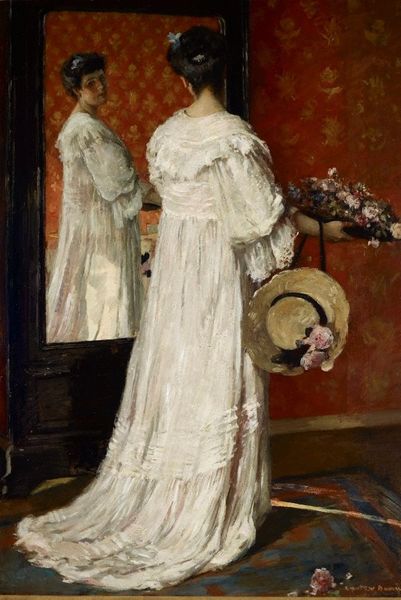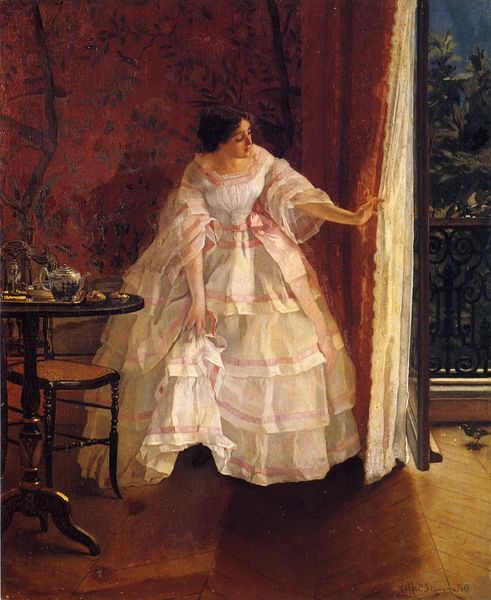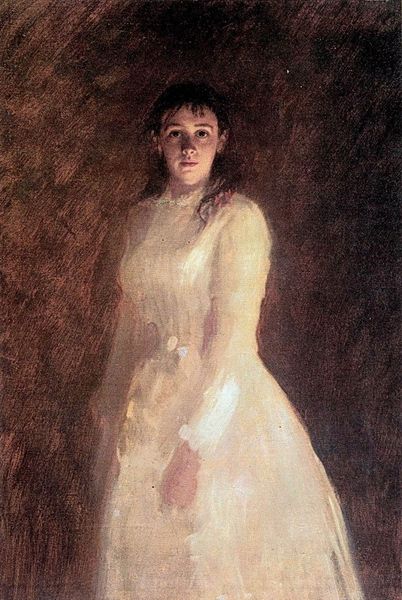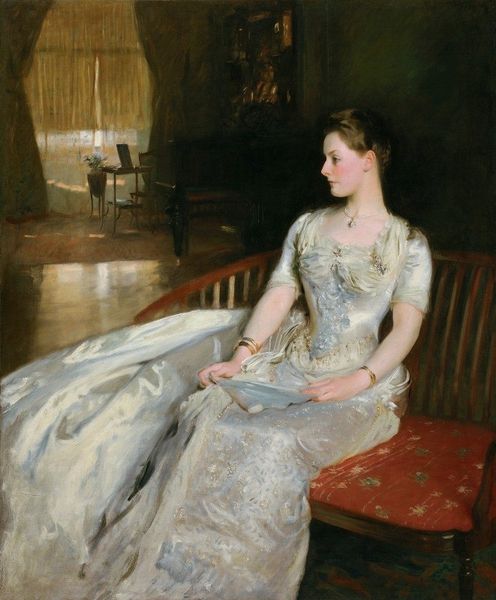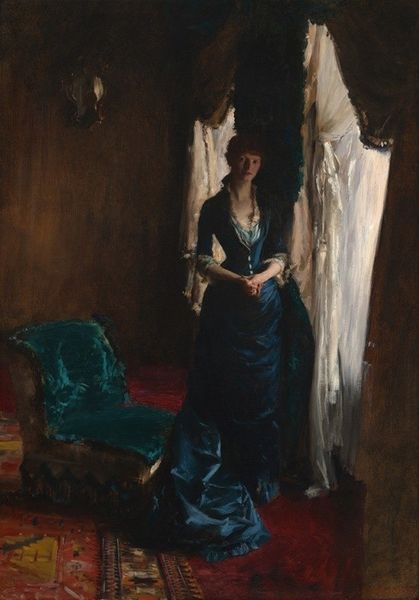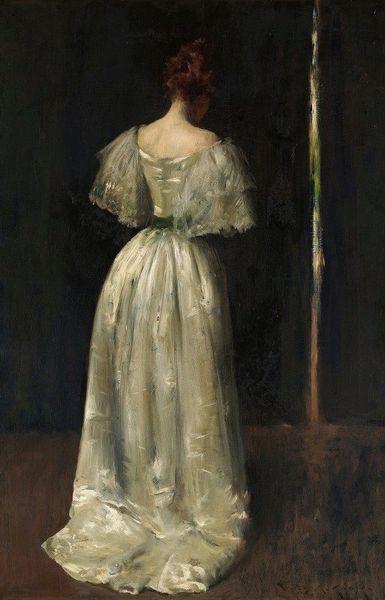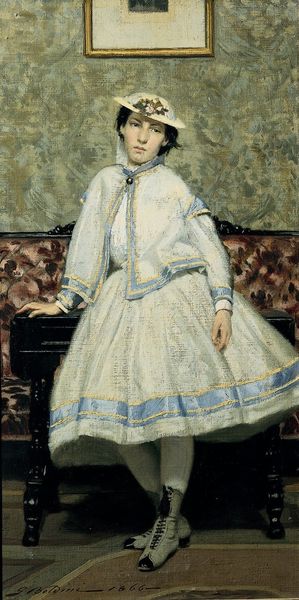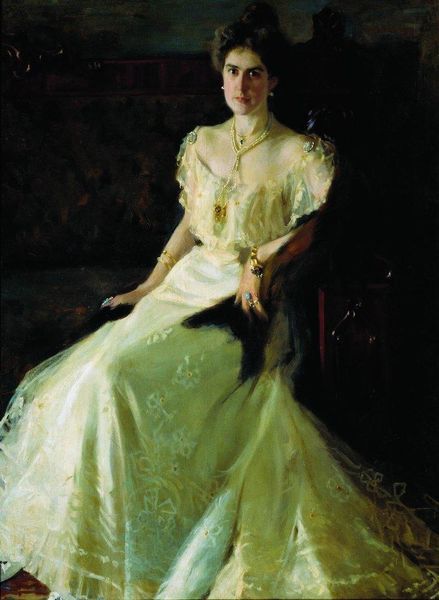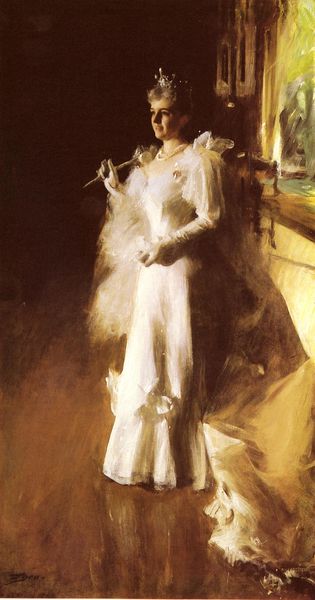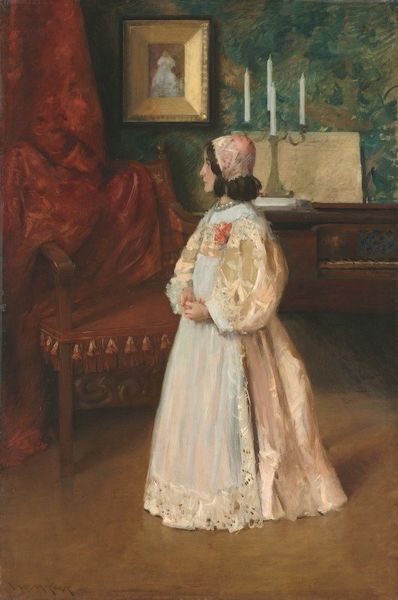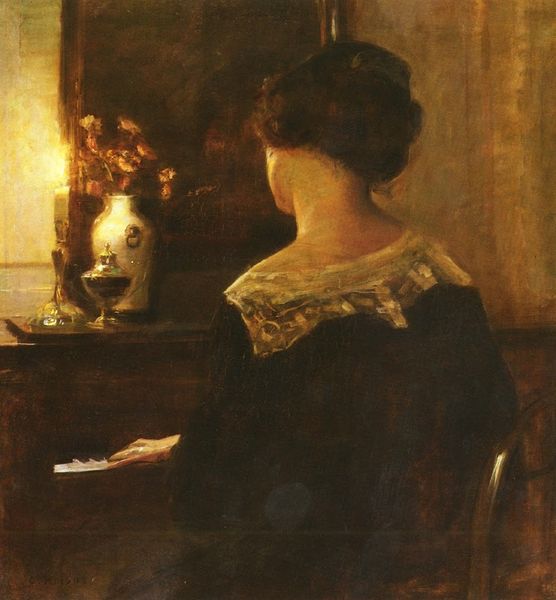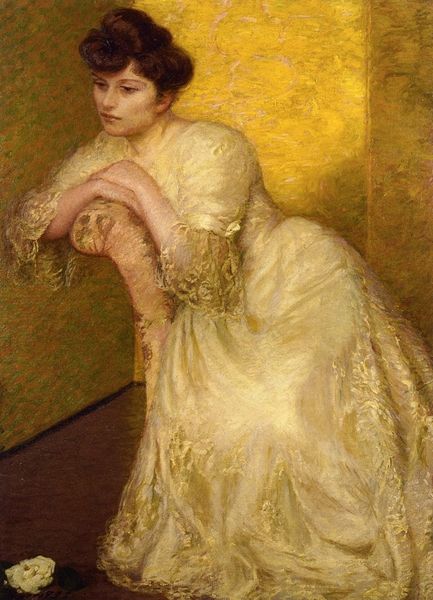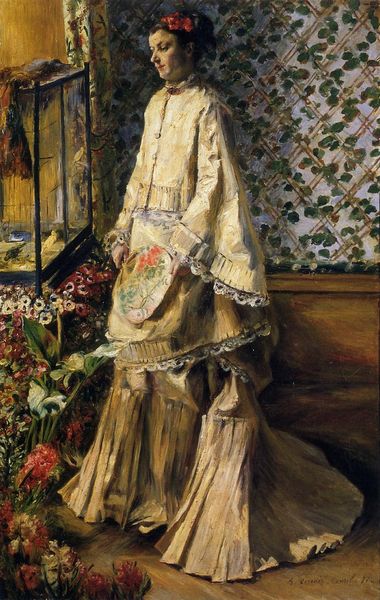
painting, oil-paint
#
portrait
#
painting
#
oil-paint
#
oil painting
#
portrait reference
#
portrait drawing
#
genre-painting
#
academic-art
#
realism
Copyright: Public domain
Editor: Eastman Johnson's "Woman in a White Dress," painted in 1873, depicts a woman turned away from us, standing near what appears to be a doorway. The brushstrokes really highlight the materiality of the dress, giving it this flowing, almost ethereal quality. How do you interpret this work, especially thinking about its construction and materials? Curator: What strikes me is the sheer volume of fabric used for this dress. Consider the economic implications. The materials—the cotton, the dye, the labor involved in its creation—all speak to a certain social class and status. Was it factory-made, or bespoke? The question really drills down into the changing modes of production at the time, and the rise of consumerism among the upper classes. Editor: So, you're saying the dress itself is as much the subject as the woman wearing it? Curator: Precisely! The white dress wasn't just aesthetically pleasing; it signified wealth and leisure. White was difficult to maintain, demanding servants and careful cleaning processes. It highlights a stark contrast—between those who could afford such garments, and the invisible workforce who sustained that lifestyle. Even the oil paint itself, and the availability of that pigment, plays into that system. What was Johnson thinking about consumption when making this piece? Editor: It makes you wonder about the artist's intentions, doesn’t it? Was Johnson critiquing this social disparity, or simply portraying it? Maybe the material choices he made help us understand his position? Curator: Exactly. Looking at the impasto, we can also tell something about the labor involved in creating it. It makes you consider his relationship to his studio assistants and what their conditions were at the time of production. That attention to process opens so many questions! Editor: I hadn't considered it in those terms before. Now I see so many more layers to the image—beyond just the surface beauty. It's not just a woman in a dress, but a statement on the socio-economic context of the time. Curator: Indeed! Considering these elements reframes how we look at the whole history of art, really.
Comments
No comments
Be the first to comment and join the conversation on the ultimate creative platform.
